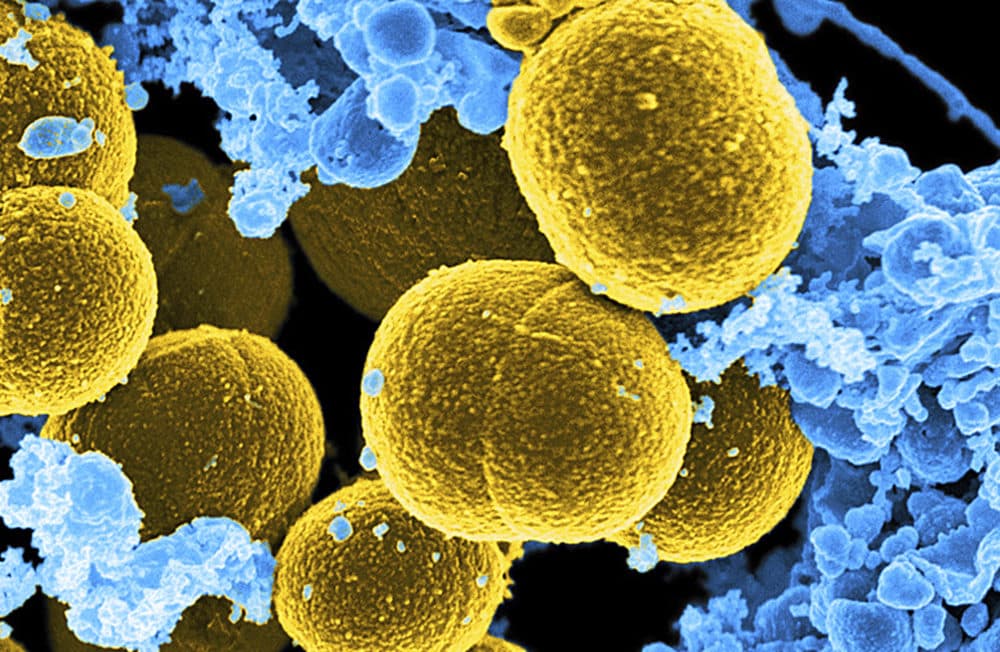Advertisement
How Bacteria Could Affect Outcomes Of COVID-19 Patients
Resume
As the COVID-19 pandemic continues, scientists are racing to unravel every aspect of how this novel virus behaves. The elderly, those with pre-existing conditions and members of disadvantaged communities with less access to health care have the worst outcomes.
But what scientists don't understand is why some people who fall outside those groups are also being hospitalized — in some cases dying — while others are not.
Among those trying to figure that out is Dr. Ronald Collman, a microbiologist and professor of medicine at the University of Pennsylvania, who thinks that our microbiome — the bacteria and fungi that live in our bodies and on our skin — may be playing a role.
While most healthy people have very little bacteria or fungi in the lungs, the nature of those microbes changes when people develop a disease, he says. The range of microbes present throughout our bodies determines how the immune system responds.
“A couple of other scientists have shown that even in healthy people, the amount of bacteria in the lung may actually set the level of natural immune response,” Collman says. “And so if the microbiome in healthy people can actually regulate the extent to which the immune system in the lung responds, maybe that's part of the reason that people respond differently to the [coronavirus].”
The vocal cords stop microbes from getting into the lungs, Collman says, and the movement of the cilia and mucus inside the lungs keeps them clean.
For people who have been smokers or have had previous respiratory issues, the cilia can be damaged, limiting the ability of the lung to clean itself, he says. Doctors still don’t know enough about how vaping or marijuana smoking affects lung structure.
“So if those cilia are disrupted, then that will lead to a change in the microbiome,” he says. “One of the questions we're asking right now is, does COVID-19 itself cause a change in the lung microbiome that might be an escalating cycle of worsening in some people?”
Through studying lung microbe samples from COVID-19 patients, Collman says he found that once the disease gets into a person’s lungs and progresses to the point where the patient needs a ventilator, the amount of virus inside their body is lower than doctors would expect.
“We definitely know that the highest levels of virus are at the earliest stages of illness, and in fact, they probably are quite high even for the days before somebody has any symptoms,” he says. “That's one of the more challenging things about this particular epidemic.”
Karyn Miller-Medzon produced and edited this interview for broadcast with Peter O'Dowd. Samantha Raphelson adapted it for the web.
This segment aired on April 16, 2020.


